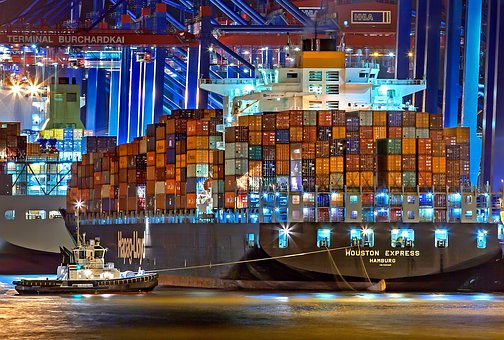The shipping industry, which transports cargo via designated shipping routes, depends on GPS signals to navigate the open waters—and this dependency has made GPS both an asset and an impediment.
Recent Iranian GPS Disruption
On May 12th, 2019, four commercial vessels were attacked and targeted by “sabotage operations” near Fujairah, United Arab Emirates. Following the attack, a United States maritime regulator issued a warning regarding potential GPS disruptions in the Persian Gulf, stating that “vessels operating in the Persian Gulf and Gulf of Oman may encounter GPS interference and other communications jamming, which could occur with little to no warning” (Maritime Administration).
Merely a month later, on June 13th, two additional commercial vessels in the Gulf of Oman were attacked.
On August 7th, 2019, the Transportation Department’s Maritime Administration issued a new warning regarding potential Iranian interference, stating that Iranian threats apply to commercial vessels in the Persian Gulf, Strait of Hormuz, and Gulf of Oman. In this warning, the Maritime Administration also stated that “vessels have also reported spoofed bridge-to-bridge communications from unknown entities falsely claiming to be U.S. or coalition warships.”
According to a CNN report, Iranian military boats have posed as merchant ships by spoofing other boats’ automatic identification systems. Additionally, Iran has disrupted civilian aircraft and ship navigation using GPS jammers on Abu Musa Island in the Persian Gulf.
The federal agency has advised U.S. commercial vessels to take precautions, such as reviewing security measures and confirming that Automatic Identification Systems are transmitting at all times.
According to Duke Buckner, senior director of strategy and business development from Microsemi’s Frequency and Time division, the Persian Gulf is a prime target for GPS jamming, as this area holds the potential for economic and military gain. The Strait of Hormuz, located between Oman and Iran, connects the Persian Gulf with the Gulf of Oman. It serves as the world’s most significant oil transit choke-point, and according to the U.S. Energy Information Administration, in 2018, its daily oil flow averaged 21 percent of global petroleum liquids consumption.
Buckner states that “GPS is far and above the best Position, Navigation, and Timing (PNT) service available; it remains ubiquitous, and most importantly, free for civilian use.” Yet GPS is susceptible to interference from weather, radio and satellite signals, and other disruptions, which, at times, makes it more of an impediment than an asset. Jamming occurs when a device emits radio signals of the same frequency of a GPS-enabled device, thus interfering with the device’s signal and disrupting it—and GPS jamming poses the largest threat to the shipping industry.
GPS Alternatives
While GPS has its drawbacks, it remains the fastest and most accurate method for mariners to navigate the water. Before GPS was introduced, mariners relied on terrestrial LORAN (Long Range Navigation), which is only accurate to one mile. This once discarded method may be reintroduced as eLORAN, but unfortunately will have significant infrastructure buildout cost and many years of delay before implementation. It should be noted that eLoran contains an additional channel for communication, and compared to GPS, has a stronger signal.
While eLoran possesses a stronger signal than GPS, there is a better solution available now and with no infrastructure cost.
Satelles’ STL (Satellite Time and Location) signals complement PNT service when GPS signals are disrupted or denied. STL’s signal structure, which encompasses overlapping spot beams that provide location-specific data and change every few seconds, is resistant to jamming and spoofing. Furthermore, it offers such benefits as:
- Ability to operate across multiple platforms
- Ability to penetrate indoor environments
- An encrypted signal 1,000 times stronger than that of GNSS
- Provides 30-50 meter accuracy
Sean McCrystal, Senior Maritime Executive at Orolia, cited STL as an alternative navigation signal for the maritime industry in his article Detecting and Defeating GPS Jamming:
STL’s encrypted signal means the vessel has an irrefutable PNT source, which in turn can authenticate communication or network access, as you can trust the vessel was in a certain location at a certain time and that communications to and from the vessel are genuine. This offers huge scope in cyber security, protection network access and the big data solutions that are rapidly changing the capabilities of the maritime industry. (McCrystal par. 13)
To read the rest of the article and learn how STL benefits the maritime industry, click below: https://www.maritime-executive.com/blog/detecting-and-defeating-gps-jamming
Sources: https://www.cio.com/article/3410601/middle-east-maritime-industry-faces-cyberthreats-gps-jamming.html



